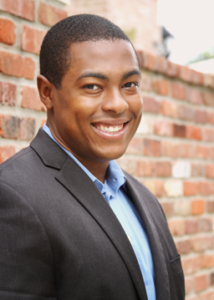
Building Your Squad
Perception is among the first points of impact in a traumatic event. How we see ourselves, the world, and our options can radically change. Sometimes our perception alters our reality. Sometimes our new reality necessitates a change in our perception. Either way, the world doesn’t seem the same when trauma happens. Reckoning with that is a lot to ask of anyone.
And it often feels like you are just “one” in the struggle.
Usually, this is the moment in professional development discussions when a workshop facilitator says something like, “But you’re not alone. You have a community right there beside you fighting the good fight. You have allies.”
There are a lot of different kinds of trauma, but I am not familiar with any that does a roll call to double check that all allies are present and accounted for. Trauma takes names, and it asks questions later. I think this is why I’ve grown weary of the ally metaphor. Allyship too often (1) emphasizes the election of the ally at the expense of the subject’s involuntary trauma and (2) accommodates conditions in which would-be supporters can exit when that is not a universal luxury. Speaking from the context of American foreign policy, it’s really quite easy to see the fickle potential of the ally metaphor.
Allyship can be good. But when you’re in the struggle, the last thing you need is for your chorus to become a soliloquy or, maybe worse, a teachable moment.
I think it’s good for teachers to ask the conditions upon which they build allegiances.
Maybe it’s the introvert in me, but if I’m going to have a squad, I want mine to be filled with accomplices—people beside me committed to dealing with a situation despite the good, bad, and ugly consequences of doing so.
As I write this, I’m in a place of transition. I’m about to embark on an exciting new chapter in my career, leaving behind a wonderful institution where I’ve spent four years teaching, advising, mentoring, problem-solving, and enduring. Over the past few days I’ve been reflecting on how I did it.
I remember learning from social media how a college-bound Michael Brown was murdered a few days before the school year that I started. I was wrestling with the ramifications of teaching from my own body in a sundown town. At the same time, I was reconsidering my scheduled curricular offerings to better help a predominantly white institution be part of the solution rather than the problem.
Some described these efforts as troublemaking and agitating. Let’s be real—some described me as troublemaking and agitating. When you become a problem you sometimes get a clearer picture of who’s with you. For me, it was a loose network of chaplains, librarians, department assistants, fellow professors, and administrators. These were the few upon whom I could count on for collegial care and collaboration. Through their diversity I’ve been able to tease out some common threads that made them squad-worthy. Maybe you’ll find these criteria helpful as you find your own squad.
(1) They assume the rewards and risks in your common initiatives.
Suffering doesn’t pay, but it does sell. The former can keep many from supporting you while the latter will bring them flocking. Squad-worthy colleagues understand this but value your work by a different metric. They acknowledge your humanity, your initiative, and your circumstances, and they ante up accordingly. This investment can come at a loss to them, but it’s worth it because they value you and your work.
(2) You complement and supplement each other’s gifts.
Successful networks have a solid understanding of what the different nodes offer to the work of the whole. My college makes great use of inventories like the Clifton StrengthsFinder to help units understand how individuals work and how they can work together. In my experience, trauma doesn’t wait for you to have a good day or for you to be at your best. This is why having people who understand how to synergize with you is worth its weight in gold.
(3) We acknowledge the power dynamics and respect our limitations.
If you go back to those listed in my squad, you will probably recognize that they span the higher educational social hierarchy. For this to work, members should recognize the stratification at play. Rewards and reprimands are diffused unevenly, so how does one mitigate that reality? What do you do to bring equity to the exchange? And are they willing to act likewise?
(4) Privacy is honored and expected.
Your individual agency is sacrosanct. The squad doesn’t need to know everything. Boundaries are encouraged. Having clear expectations is essential in fruitful relationships.
Once, some colleagues and I were kicking around these ideas, and we determined that some of our allies weren’t really accomplices. One trauma or another had tested their resolve too much. That doesn’t mean relationships need to be jettisoned. It’s a reminder that squads must be built. These are just a few of the ways you can be proactive about building a squad that lasts.
Leave a Reply